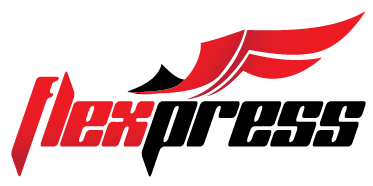Uncategorized
Great Results Start With Good Files
As a certain pizza chain likes to say “Better ingredients. Better pizza.” So it goes with printing as well. Better art files make a better printed piece. In an effort to help everyone achieve better results we offer a few simple pointers that can make a big difference.
Start With the Right Tools
Don’t get us wrong. Microsoft Word, PowerPoint and Publisher are all good software programs and they do exactly what they were built to do. Unfortunately, they were not built to be page layout programs for use in actual printing. When used in printing anywhere beyond office type laser printers they can create a multitude of output problems, not the least of which is reflowed – or worse yet – missing text. Only true design software can give the best results. By design software we mean InDesign, Adobe Illustrator and QuarkXpress. Yes, we know these software packages can be expensive for our customers who are not marketing firms or ad agencies. But, if you plan on producing more than an occasional piece, the cost will be well worth it and will pay off in polished communication materials that will represent your company or client without ugly surprises. If you only plan on producing one brochure or sales piece and want a professional result without purchasing the layout software, you might consider having an agency or your printer design the piece.
Use High Resolution Images
In order to avoid rough, jagged edges or fuzzy photos and graphics it is important to use a high-resolution (300 dpi) image scaled at 100% of its actual printed size. This is true whether you are using a digital or offset printing process. Images pulled from the Internet are NOT high res. They are typically 72 dpi and have been stripped down for faster online page viewing. Honestly, we can’t stress this enough. Don’t use them, you won’t be happy with the results.
RGB is not CMYK
In digital printing the colors are produced in CMYK (Cyan/Magenta/Yellow/Black). Computers display colors in RGB (Red/Green/Blue). These colors are mixed together side by side to create all the colors you see onscreen. Because there are so many variables associated with computer monitors it is very important to realize that onscreen colors are rarely accurate and you should not expect the final printed piece to match what you saw on your computer. If you have ever viewed two monitors side by side you understand what we are saying. In order to get the colors you really want, use a Pantone® color matching system (PMS) swatch book to designate the right colors for your printed piece. It is the industry standard for printing. Having said that, there are still variances between PMS colors and the CMYK color mixes for them and a PMS to CMYK swatch book will be the best indicator of color. We calibrate our presses daily to ensure accuracy and we also have color packets available to show how PMS colors reproduce on our presses. We encourage our customers to refer to them when accurate color match is critical.
The Ins and Outs of Live Area, Trim and Bleed
Trim area or trim size refers to the actual finished size of the printed piece.
Live area is the space inside the trim where you can safely place the type and images without them being subject to the risk of being cut off. Paper can shift up to 1/16th (.0625) of an inch when zipping through the presses. When pages are cut to the final size there is also the possibility of a slight shift. A margin of 1/8th (.125) inch between the live area and the trim area on all sides is recommended. Do not run text all the way to the edges of the page if it is important that people be able to read it. If it is strictly for decorative purposes, then do as you please, of course.
Bleed refers to the area outside the trim area/crop marks. Just as small shifts can occur which will cut off an area they can also cause more to show on the opposite edge. If you have artwork you want to go to the very edge of the page it is necessary to extend that image at least 1/8th inch beyond the edge of the page so that no paper will show when trimmed.
Convert or Embed Fonts
Missing fonts can wreak havoc on any design. Whenever possible, convert the text in your final art file to outlines. (Psst, voice of experience speaking here. It is a good idea to keep a copy of your final art with the type unconverted and editable in case there are any last minute edits.) If the program you are designing in does not have the option of converting the fonts then be sure to embed them in your PDF.
Flatten Your Files
Check your PDF settings and be sure to flatten transparencies to avoid boxes and outlines created by drop shadows. Yikes! No one wants those.
Submit the Art as a PDF
Although we can accept native InDesign and Illustrator files, PDFs are the preferred file format. They prove to be the most reliable for use in the print industry. We have a Digital Printing File Primer sheet (in PDF format, no less!) that goes into deeper detail on how to prepare your PDF for final output. It includes a handy checklist. It can be downloaded from our web site at www.flexpress.com.
